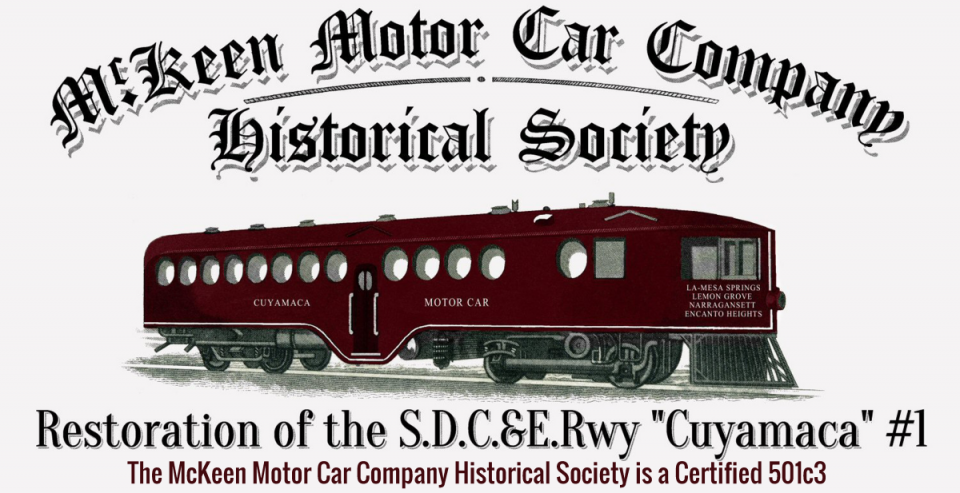The Union Pacific Gasoline Motor Car – Railroad Gazette
0Here is an article written in the magazine “Railroad Gazette”, March 10, 1905.
The Union Pacific Gasoline Motor Car
For some time past the Union Pacific has been engaged in developing a gasoline motor car suitable, for high-speed branch line and interurban service. The car was turned out of the shops a few days ago and is now being given service trials. The design of the car presents some new features, being modeled after the lines of the racing yacht “Reliance”, inverted. The rear of the car is rounded off to avoid the formation of the vacuum present with square-ended cars. The front tapers to a sharp point. The roof is given a taper from the middle to produce a splitting effect in the atmosphere and minimize resistance. It is entirely smooth except for the Cottier ventilators, which exhaust by sucking the air from the interior of the car.
The truck is of original and unique design with many new features. It is intended to embody the good points of the street car, Pullman and locomotive trucks. The most Important feature is the design of the springs. They are so constructed and applied as to avoid the teetering action ordinarily experienced in the old-style trolley car. The truck wheels are 42 in.
The car is driven by a six-cylinder gasoline engine made by the Standard Motor Works, Jersey City, N. J. It is a remarkable machine and is quite similar to the design used in the Standard-auto-boats which made such a wonderful record in the auto boat races on the Hudson River last June. The Standard boat No. 1 was capable of a speed of 25 to 30 m.p.h. The engine was redesigned and built in accordance with the railroad company’s plans to make it suitable for motor car service. Large air reservoirs are carried underneath the car, and by means of the air passage and a starting device the car is rapidly put in motion and picked up by the engine, attaining a maximum speed, without jar, in a minimum space of time. The designers claim that there is practically no limit to the speed that the car may attain, though it will probably be limited to a service speed of 40 m.p.h. The clutches and controlling devices are all mechanical and of simple design. Special effort was made to avoid the complicated machinery usually found in gasoline-engine propelled motor boats and cars.
The ventilation of the car is said to be particularly good, the air being almost as fresh as that outside. The air is taken in at the top of the car and by small ducts is gradually diffused throughout the interior. In the winter time the air is passed over hot pipes before entering the car. The impure air is sucked out at the top through the ventilators. Another feature of note in the design Is the provision for thoroughly cleaning and disinfecting its interior. The floor is made water-tight so that the car can be flushed out with hot water to kill all germs and sources of infection. The seats are leather and the walls and ceiling are made as smooth as possible to enable thorough cleaning with little labor.
A system of coils through which the water from the cylinder jackets may be circulated, runs around inside of the car for warming it in winter, sufficient heat being radiated to produce a comfortable temperature. Another system of coils is provided under the car for use in summer time. The heating of the car is regulated by a controlling valve which passes more or less water through each system of coils as the temperature requirements of the interior make necessary. By means of an air cylinder the rear door is kept closed while the car is In motion. When it is desired to let passengers on or off, the door is opened and the step trap-door lifted by air cylinders operated from the front end. Thus, passengers cannot alight from or board the car while it is in motion. The car is considered to be an unusually strong design, impossible to telescope or crush, affording safety to its passengers in case of collision or wreck.
The lighting is by acetylene, including the headlight. The interior lighting is through opalescent panels, giving a good strong light over the shoulder for reading, while the general lighting is pleasing and restful to the eye. The car is painted maroon with aluminum trimmings. Its seating capacity is 25. This particular car is intended for local passenger service out of Portland, Ore. It was designed and built at the Omaha shops of the Union Pacific under the supervision of Mr. W. R. McKeen, Jr., Superintendent of Motive Power and Machinery.
0 comments »
You must be logged in to post a comment.

